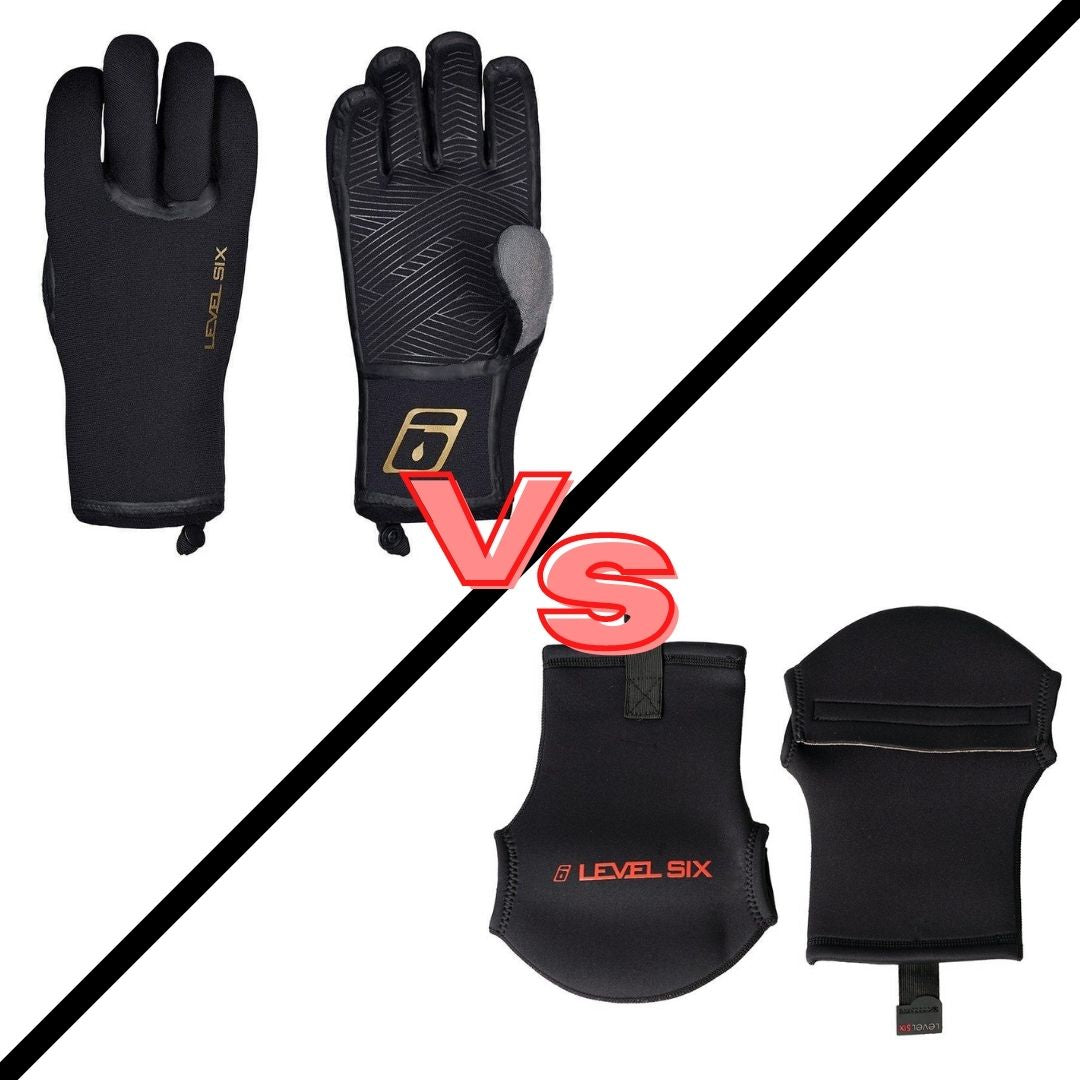
Keeping Your Hands Warm! – Pogies Vs Gloves
Share
By Alex Matthews
Now that it’s winter, temperatures have dropped, the rain and wind of winter storms are lashing the coast, and we’ve even been snowed on here on Vancouver Island!
But winter is still a great time to kayak. In fact one of the wonderful things about living here is that you can easily paddle year-round. But how do you keep your hands warm?
When it comes to protecting your hands from cold when paddling, there are 2 distinct approaches: pogies or gloves/mitts.
What is a pogie? A pogie is, in essence, a large oversized mitten. But not one that attaches to your hand. Instead, the pogie is designed to attach snugly to the shaft of a paddle (most commonly with Velcro). A pair of pogies is used, with one per hand. The genius of the design is that the paddler’s hand reaches up ‘through’ the pogie and grasps the paddle shaft directly – with the exact same ‘skin-to-shaft’ contact and grip that is experienced when no pogie is present at all. Maintaining this direct grip on the shaft transfers all the ‘feel’ and sensitivity that you’re used to (which is fantastic), while the over-shell of the pogie protects your hand from wind and cold.
Pogies are most commonly made out of nylon (sometimes with a fleece lining) or neoprene. In my experience, neoprene offers the best combination of warmth, durability, and ease of use.
Pogies work amazingly well at keeping your hands warm! It’s actually kind of surprising - there’s a fair amount of water transfer into the pogies at times, but while your hands may be wet, the pogies really keep hands toasty. It’s advantageous to have a slightly wider opening at the ‘cuff’ of the pogie, rather than a tight seal. This might initially seem a little counter- intuitive, as it feels like a good idea to have the cuff be snug to your wrist in order to minimize water entry. But in use, a snug cuff is a real pain to get your hand into, and it’s nice to be able to slide your hand in and out of the pogie without a struggle.
The only real downside of pogies is that, because they are attached to your paddle, when you don’t have your hands in them and on your paddle shaft, you essentially have no hand covering at all. In use, all this really means is that your hands are briefly exposed to the elements when you put down your paddle in order to do some other task. Like putting on your spraydeck for instance, or pulling an energy bar out of your PFD.
There are some scenarios where pogies are a little less than ideal though. If you need to do a rescue for instance, and that rescue requires you to have your hands off of your paddle for an extended period of time, then your hands will be exposed and they will get cold. So if you perform lots of rescues, or often need to complete tasks where you’re not using your paddle, you may well want to opt for gloves or mitts.
Pogies are also not going to work very well for kayakers who routinely move their hands around a lot on their paddles. Greenland style paddlers often slide their grip from loom to blade and back, taking advantage of extended paddle positions, and for them, mitts or gloves will grant them the freedom of hand placement that they demand.
But gloves and mitts have their issues too. Unlike a pogie, when wearing a glove, there is always a layer of material between the skin of the hand and the paddle shaft. If this material is thicker (like neoprene) then the actual diameter of the shaft is effectively enlarged by the presence of this added material. Thicker neoprene is warmer, but also stiffer, so not only is there a certain ‘disconnect’ from the feel of your paddle shaft, there’s also a bit of effort required to flex a thick glove or mitt into a gripping position. Better gloves have a distinct pre-curved shape that goes a long way to lessening the need to ‘squeeze them closed’ when gripping a shaft.
I find it a tricky compromise to get a glove that is flexible enough through the palm to give me the feel and grip that I want, but still thick enough to keep my hands warm. Through many years of whitewater kayaking, I typically opted for light neoprene gloves with synthetic leather palms. These gave me the feel and sensitivity that I wanted, gave me some protection from rocks, and were in place even when I was out of my boat – whether scouting a drop, or even swimming a rapid. But my hands were often cold. The gloves weren’t thick enough to keep my fingers warm, and I routinely suffered a little bit.
Thicker gloves are warmer, but for me, ‘the feel’ isn’t great.
Pogies are warmer still, and unless you’re likely to be doing something other than gripping your paddle, then I think that they are the warmest and most comfortable option for most touring sea kayakers.
A simple set of neoprene pogies are warm, and they can truly make the difference between suffering miserably on a paddle with freezing cold hands, or having a lovely time out on a chilly winter’s day. Pogies are also quick to attach or detach from a paddle as needed, so it’s easy to don them when desired, or store them away should conditions warm up. They’re also quite compact, so you can happily stash them in your boat on any trip, even when you think that you’re unlikely to need them (it’s nice to have the option). They’re even ‘one size fits all’, so pogies can be lent to other paddlers in your group without any sizing issues. Deceptively simple and highly effective – pogies are a great addition to a kayaker’s clothing system.
